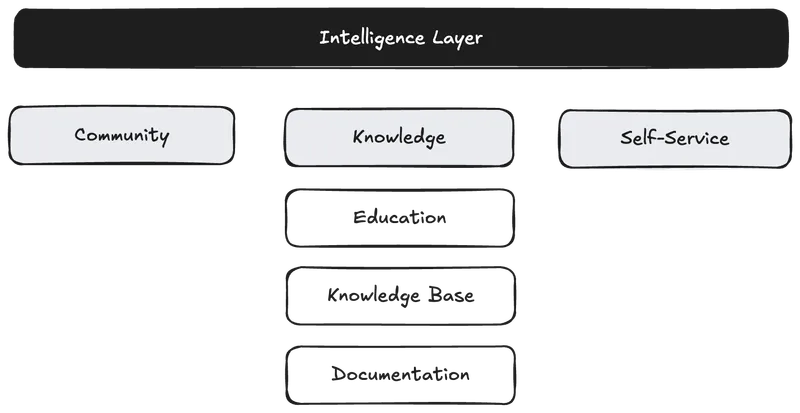Here’s the thing about customer experience: most companies are approaching it incorrectly.
They are assigning more people to problems instead of creating systems that prevent issues from arising in the first place.
The real opportunity lies not in hiring more support agents or using fancier chat widgets, but in developing a flywheel where every customer interaction enhances the next one.

Think of it like compound interest, but for customer experience.
Start with community.
Not a ghost town forum, but a genuine space where customers want to engage. When customers assist each other, magic happens. They resolve issues faster than your support team ever could and develop solutions you might not have considered.
They do this voluntarily, not because you are compensating them.
The best part? When a power user documents how they solved an issue, that can be preserved and utilized.
These are real solutions from real users who have faced similar challenges.
However, community alone isn’t sufficient.
You need a functional knowledge engine. Most companies treat their knowledge base like a junk drawer. Information gets tossed in, but no one can find anything or even bothers to look.
Knowledge-Centered Service changes this perspective.
Every support ticket transforms into a knowledge article. Every question uncovers a gap that needs addressing. The system becomes smarter with each interaction.
This also means it becomes part of the employee journey, solving one side of the equation.
Then there’s self-service.
It may sound dull, but it becomes revolutionary when executed correctly. Instead of making customers sift through FAQs, or open support tickets—anticipate their needs.
Use features to present the right answer at the right moment. Create workflows that guide users through complex tasks. Direct customers to your community for help, instead of banging their head against a wall.
Make it so easy that seeking official help feels more burdensome than resolving the issue themselves.
The intelligence layer connects everything.
Consider how valuable it would be to know the exact steps that led to a support ticket.
This isn’t about dashboards filled with vanity metrics. It’s about grasping the complete narrative of every customer interaction. Why did someone need assistance? What led them there? What happened afterward?
When you can identify these patterns, you can address root causes instead of merely treating symptoms.
Here’s what happens when you get this right: customers begin solving their own problems.
They assist one another and become advocates rather than support burdens. Your team stops playing whack-a-mole with tickets and starts building meaningful solutions.
Most importantly, the entire system becomes self-reinforcing.
Better community content leads to improved self-service. Enhanced self-service results in happier customers who contribute more to the community. Better intelligence uncovers opportunities for further improvements.
Each element strengthens the others.
This isn’t about technology for its own sake.
It’s about understanding that customer experience is a system, not a department. Every touchpoint either adds momentum to your flywheel or creates friction that slows it down.
The companies that grasp this concept first will leave others scrambling to catch up.
The choice is clear: continue hiring more people to manage more problems, or build a system that prevents issues from occurring in the first place.
One approach scales linearly.
The other scales exponentially.
Quick Quiz: Do You Actually Know Your Onboarding?
Answer without checking any tools or processes:
- What exact event marks “new customer onboarded”?
- Which tools fire, in what order?
- What does the user see vs. what gets sent (email/SMS/in-app)?
- Where are failures logged, and what triggers an intervention when someone is stuck?
If you can’t answer confidently, you don’t know your onboarding. Go verify, log the friction points, and fix them!
